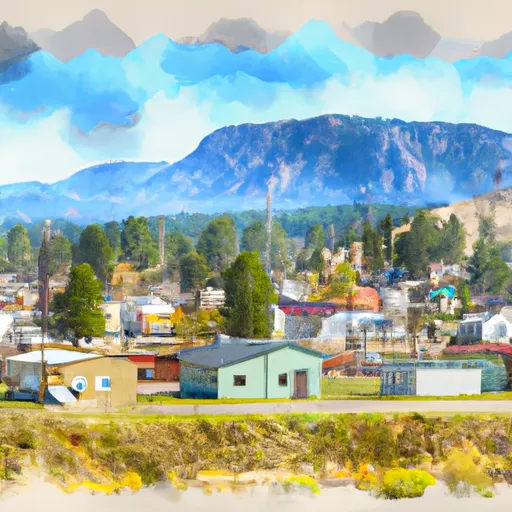-
 Snoflo Premium
Snoflo Premium
Get unlimited access to all our content
With no Ad interruptions! - Start Your Free Trial Login with existing account
Wisdom
Eden Index
Climate
5.2
•
Recreation
4.8
•
Community
•
Safeguard
3.7/10

Wisdom is a small town located in Beaverhead County, southwestern Montana, amidst the stunning Big Hole Valley. The town experiences a continental climate characterized by cold winters and mild summers. Winter temperatures can drop below freezing, accompanied by frequent snowfall, making it an ideal destination for winter sports enthusiasts. Summers are pleasant, with temperatures averaging around 70°F, perfect for outdoor activities.
Situated near the Big Hole River, Wisdom benefits from a rich hydrology system. This pristine river is renowned for its exceptional trout fishing. Visitors can enjoy fly fishing for brown, rainbow, and cutthroat trout, making it a paradise for anglers. Additionally, the river offers opportunities for kayaking, rafting, and canoeing.
The surrounding landscape of Wisdom is dominated by awe-inspiring mountain ranges and vast wilderness areas. The nearby Big Hole National Battlefield preserves the history of the Nez Perce War and offers hiking trails with panoramic views. Outdoor enthusiasts can also explore the vast Beaverhead-Deerlodge National Forest, offering endless opportunities for hiking, camping, wildlife viewing, and hunting.
In summary, Wisdom, Montana, offers a delightful continental climate, a thriving hydrology system, and a plethora of outdoor recreation opportunities suitable for nature enthusiasts and adventurers alike.
What is the Eden Index?
The Snoflo Eden Index serves as a comprehensive rating system for regions, evaluating their desirability through a holistic assessment of climate health, outdoor recreation opportunities, and natural disaster risk, acknowledging the profound impact of these factors on livability and well-being.
Climate Health Indicator (CHI): 5.2
Wisdom receives approximately
398mm of rain per year,
with humidity levels near 68%
and air temperatures averaging around
2°C.
Wisdom has a plant hardyness factor of
3, meaning
plants and agriculture in this region thrive during a short period during spring and early summer. Most
plants will die off during the colder winter months.
By considering the ideal temperature range, reliable water supplies, clean air, and stable seasonal rain or snowpacks, the Climate Health Indicator (CHI) underscores the significance of a healthy climate as the foundation for quality living.
A healthy climate is paramount for ensuring a high quality of life and livability in a region, fostering both physical well-being and environmental harmony. This can be characterized by ideal temperatures, reliable access to water supplies, clean air, and consistent seasonal rain or snowpacks.
Weather Forecast
Streamflow Conditions
Missouri Headwaters
Area Rivers
Missouri Headwaters
Snowpack Depths
Missouri Headwaters
Reservoir Storage Capacity
Missouri Headwaters
Groundwater Levels
Recreational Opportunity Index (ROI): 4.8
The Recreational Opportunity Index (ROI) recognizes the value of outdoor recreational options, such as parks, hiking trails, camping sites, and fishing spots, while acknowledging that climate plays a pivotal role in ensuring the comfort and consistency of these experiences.
Access to outdoor recreational opportunities, encompassing activities such as parks, hiking, camping, and fishing, is crucial for overall well-being, and the climate plays a pivotal role in enabling and enhancing these experiences, ensuring that individuals can engage in nature-based activities comfortably and consistently.
Camping Areas
| Campground | Campsites | Reservations | Toilets | Showers | Elevation |
|---|---|---|---|---|---|
| American Legion Park - Wisdom | None | 6,045 ft | |||
| Mussigbrod | 10 | 6,503 ft | |||
| Reservoir Lake | 22 | 7,080 ft | |||
| Van Houten | 9 | 6,994 ft | |||
| Jennings Camp | 4 | 4,887 ft | |||
| Twin Lakes | 21 | 7,268 ft | |||
| Martin Creek | 7 | 5,275 ft | |||
| Miner Lake | 18 | 7,015 ft | |||
| May Creek | 21 | 6,378 ft |
Nearby Fishing
Nearby Ski Areas
Catastrophe Safeguard Index (CSI):
The Catastrophe Safeguard Index (CSI) recognizes that natural disaster risk, encompassing floods, fires, hurricanes, and tornadoes, can drastically affect safety and the overall appeal of an area.
The level of natural disaster risk in a region significantly affects safety and the overall livability, with climate change amplifying these risks by potentially increasing the frequency and intensity of events like floods, fires, hurricanes, and tornadoes, thereby posing substantial challenges to community resilience and well-being.
Community Resilience Indicator (CRI):
The Community Resilience Indicator (CRI) recognizes that education, healthcare, and socioeconomics are crucial to the well-being of a region. The CRI acknowledges the profound impact of these elements on residents' overall quality of life. By evaluating educational resources, healthcare accessibility, and economic inclusivity, the index captures the essential aspects that contribute to a thriving community, fostering resident satisfaction, equity, and social cohesion.

